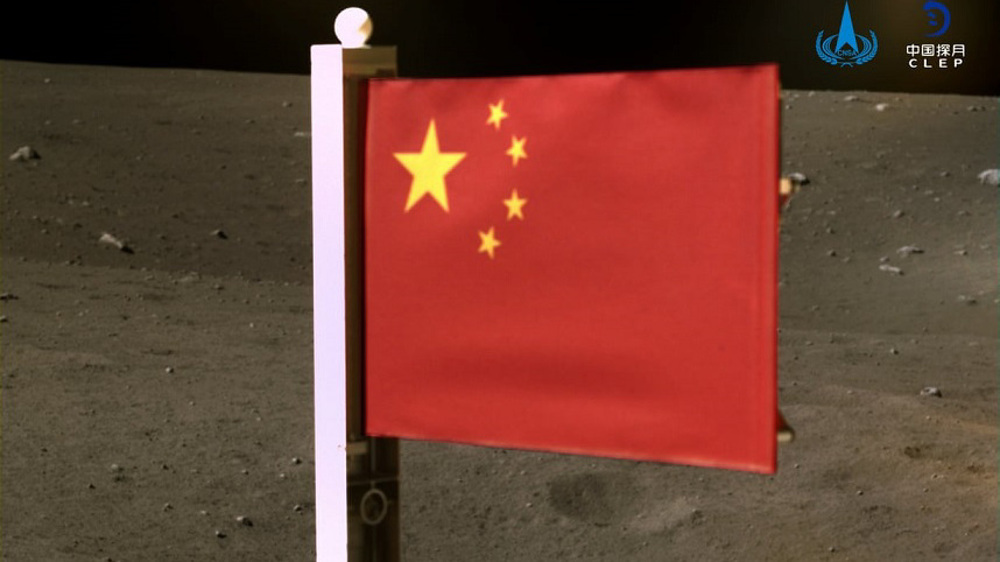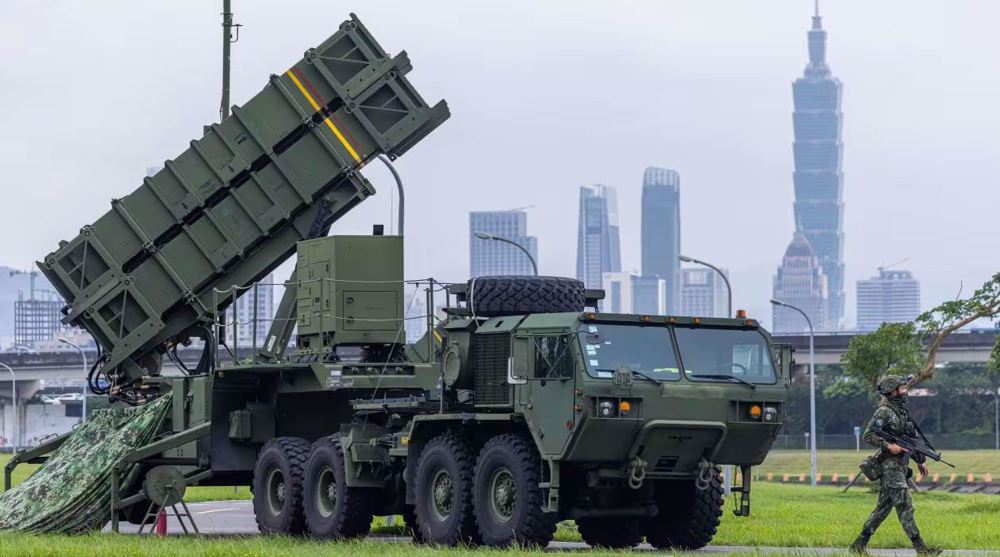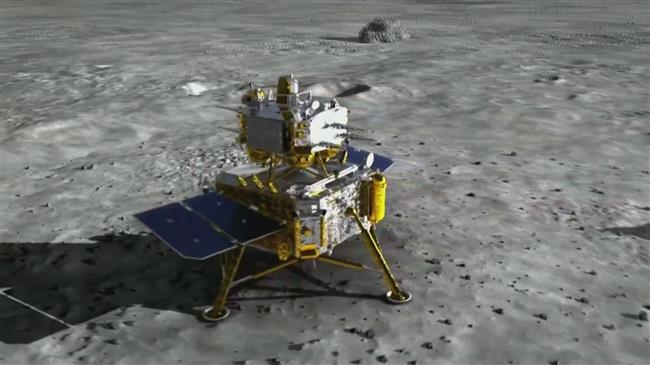Lunar probe heading back to Earth with samples after planting China flag on Moon
China has become the second country in history to put its flag on the Moon, more than 50 years after the US first planted the Stars and Stripes.
Pictures from the country’s National Space Administration show the five-starred Red Flag holding still on the windless lunar surface.
The images were taken by a camera on the Chang’e-5 space probe, named after the mythical Chinese Moon goddess before it left the planet on Thursday to return to Earth.
The space probe also brought the first samples of lunar rock to be collected in four decades.
China has poured billions into its space program, with hopes of having a crewed space station by 2022 and eventually sending humans to the Moon.
The Chang’e-5 spacecraft left the surface at 11.10 p.m. Beijing time (3.10 pm GMT), said the state broadcaster CCTV, as mission engineers watching control screens applauded at length.
A module carrying lunar rocks and soil was in orbit after activating a powerful thrust engine, Chinese officials said of the mission, which was launched from China’s southern Hainan province.
Scientists hope the samples will help them learn about the Moon’s origins, formation, and volcanic activity on its surface.
If the return journey is successful, China will be only the third country to have retrieved samples from the Moon, following the US and the Soviet Union in the 1960s and 70s. This is the first such attempt since the Soviet Union’s Luna 24 mission in 1976.
The spacecraft was due to collect 2kg (4.5lb) of material in a previously unexplored area known as Oceanus Procellarum (Ocean of Storms), a vast lava plain, according to the science journal Nature.
The samples will be returned to Earth in a capsule programmed to land in northern China’s Inner Mongolia region, according to NASA.
Under President Xi Jinping, plans for China’s “space dream”, as he calls it, have been put into overdrive. Beijing is looking to finally catch up with the US and Russia after years of belatedly matching their space milestones.
China launched its first satellite in 1970. Human spaceflight took decades longer, with Yang Liwei becoming the first “taikonaut” in 2003.
A Chinese lunar rover landed on the far side of the Moon in January 2019 in a global first that boosted Beijing’s aspirations to become a space superpower.
The latest mission was among a slew of ambitious targets, which include creating a powerful rocket capable of delivering payloads heavier than those NASA and the private firm SpaceX can handle, a lunar base, and a permanently crewed space station.
China’s taikonauts and scientists have also talked up crewed missions to Mars.
The US planted the first flag on the Moon during the manned Apollo 11 mission in 1969. Five further US flags were planted on the surface during subsequent missions up until 1972.
(Source: AFP)
VIDEO | Press TV's news headlines
VIDEO | UNRWA Spain sounds alarm on deepening Gaza crisis
VIDEO | UK police arrest protesters for chanting ‘globalize the intifada’
VIDEO | Yemenis rally in anger over Holy Qur'an desecration
VIDEO | Citizens question EU's €90 billion interest-free loan to Ukraine
US launches ‘retaliatory strikes on Daesh targets’ in Syria amid controversy over intervention
FM: Iran open to dialogue based on respect for nation’s rights, but opposes one-sided imposition
Iran reiterates rejection of interventionist stances on its territorial integrity












 This makes it easy to access the Press TV website
This makes it easy to access the Press TV website